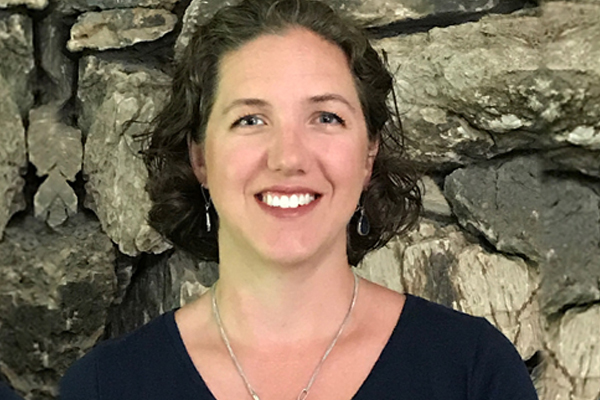It can seem like the transition from Lent to Easter is more relief than rejoicing. After sticking with, or starting over and over, our Lenten asceticism, we shift to singing “alleluias” without deeper awareness. Glad the 40 days of sacrifice is over, I think we often forget that the church calls us to 50 days of Easter celebration.
In our daily lives and the living of our faith, we can fall into a similar disproportionate dynamic. While we know intellectually that Christ’s resurrection is more important than his passion, we are “slow of heart” to believe it.
“Slow of heart” is what Jesus called the two disciples as he journeyed alongside them on the way to Emmaus, explaining the Scriptures about himself but not being seen or known by them until he broke the bread and gave his Eucharistic self to them.
In all four Gospels, the passages about the resurrection of Christ iterate the same dynamic. Jesus’ followers were all looking for their crucified Lord, even though he had told them repeatedly that he would suffer and die before he was raised up.
Most of us have heard this Christian promise our entire lives – we have been baptized into Christ’s death so that we might be raised with him on the last day. But both days are distant from the everyday realities of work, relationships and responsibilities.
“Why do you seek the living one among the dead?” the angels ask the women as St. Luke recounts. In Mark’s Gospel, Jesus rebukes the disciples for their unbelief and hardness of heart for not believing the testimony of the women. Even Mary Magdalene, as the evangelist John tells us, didn’t recognize Jesus at first until he said her name.
Matthew’s account has the lightning-like angels telling the women not to be afraid after the earthquake, “I know that you are seeking Jesus the crucified – He is not here.” Matthew says they went away “fearful yet overjoyed;” Luke writes that the disciples, even after seeing the Lord’s hands and feet, were incredulous with joy and amazed.
Why is that we recognize the crucified Christ more readily than him resurrected? And why, as a consequence, do we cling to the crosses in our own lives – where we think he waits for us indefinitely – rather than embracing the joy that he suffered his passion to give us?
Even as a church, we can fall into a similar perspective. We are all likely aware of the tragic bridge collapse and lives lost in Baltimore on Tuesday of Holy Week. Without discounting that as news and a prompting for prayer, how many are aware that almost 700 candidates and catechumens were received into full communion with the Catholic Church for the Archdiocese of Baltimore this Easter, an increase of almost two hundred people from last year?
My family attended Good Friday service and a four-hour long Easter Vigil at St. Paul’s Catholic Student Center in Madison. Besides the incredibly beautiful liturgy, my husband and I were left speechless witnessing the 65 students come into the church – not quite triple the numbers from last year, with 23 of them receiving all three sacraments of initiation.
The church is alive! Jesus has risen. Why do we have such a hard time seeing him as glorious and victorious? How often do we miss his presence in our lives, like the disciples that Easter morning, because we’re still weighed down by the cross, both his and our own?
I had never thought of how consistent the experience was by those present in Jerusalem that eternity-shaking morning – the struggle to recognize the risen Christ.
We hear his admonition to take up our cross daily and follow him. The reality of suffering resonates, but why is it so hard for us to believe his promise of new life?
We exhaust ourselves trying to understand the mystery. So much so that we’re left weeping and distraught and unable to see him when he comes bringing peace and hope.
Jesus’ wounds did not disappear from his glorious body, but they were transformed. Let us pray, beg of him, for the grace to see with renewed and resurrected souls this Easter season – all 50 days of it. May our hearts burn within us, as the two disciples described after discovering Christ in the breaking of the bread.
Might I suggest, or encourage, reaching out to at least one of these new converts or some family member or friend who converted to the Catholic faith as an adult. Let’s ask them to share their story of how they came to discover, to see Christ, as the way, truth and life. Let their newfound light and love shine into our own lives and help us to see the risen Christ and his church anew.

Jenny Snarski
